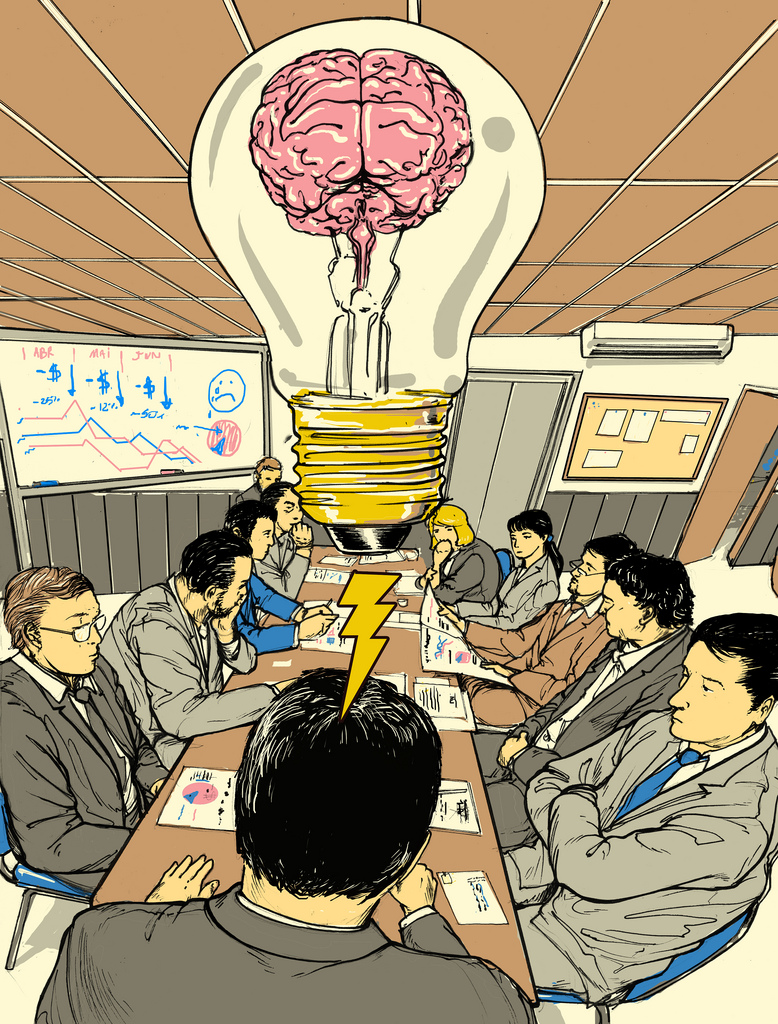Last Updated on February 29, 2024
Have you ever visited a store just to take a look at the goods and an hour later you find yourself walking out with bags full of purchased products? Have you ever thought about the reason for this strange behavior? The whole secret is in the hands of smart managers who’ve studied psychological techniques.
“Do You want to have healthy teeth?”
Pronouncing this phrase, the seller uses two techniques of persuasion. The first – the use of rhetorical questions. They are delivered in such way that they force you to agree with the speaker, because the answer is obvious. This is done to inspire confidence and the feeling that the seller has the same outlook on life as you. The second technique is – the use of “yes-questions.”
It might not be questions related to the product. The seller may ask: “Nice weather, is not it?” Once a person agrees to something, even something small and insignificant, it will be easier to accept more important things, such as, to say, “Yes, I buy it.” Just like the “yes-questions” the good humor is valid. A person in a good mood, relaxed, and is ready to buy a product that is associated with pleasant emotions.
“You deserve this car”
People love flattery. They like it when they feel special, significant and intelligent. In everyday life, you can use this by talking to a man with the phrase: “I don’t think that a man of such level as you will agree to find the time to help me …” In advertising, this technique usually involves a direct appeal: “You appreciate quality”, “You do not like to waste time in vain.”
Sometimes, to grow in viewers a sense of superiority, advertising shows people doing stupid things. We like those who make compliments, and we tend to trust those who are like us. Consequently, it is easier to convince us to buy something from them. (We believe that such intelligent people as you understand how this technique works.)
“You want to sell sugary sodas for the rest of your life? Or do you want to come with me and change the world? “
In this famous phrase, Steve Jobs used several techniques of persuasion to lure John Sculley from PepsiCo. First, a simplification. The reality constantly makes people feel uncomfortable. Professional manipulators help them relax for a moment, ignoring the difficulties and offering simple solutions. Deodorant, car, or a certain brand of beer can make a person beautiful, popular and successful. It also acts as a factor of the Big Lie.
As the great manipulator Adolf Hitler said: “People are more suspicious with a small lie than with big one.” The third technique is also quite well known: the reduction of choice to two options, one of which is obviously worse. Instead of allowing a person to think about the many alternatives, manipulators give only two options to choose from.
“Only today 50% off”
This technique works on the instinct of survival, causing fear of missing out something valuable. The researcher Noah Goldstein of the Anderson School of Management calls it “the instinct to grab all you can, or be left with nothing.” The ads often use appropriate slogans: “Last Chance”, “Hurry up, before its too late.” According to statistics, during the last days of a sale, people spend 10% more than they would have.
Why? Because they’re led by panic, which takes away a person’s ability to think rationally. Renowned researcher Robert Cialdini calls this technique “the creation of scarcity”. The use of fear as a manipulative techniques possible in real life. For example, your boss may insinuate that in the nearest future there will be personnel cut – that forces you to work overtime.
“It’s worth a million dollars!”
In English, this technique is called the door-in-the-face. The principle of this operation requests an outrageous price that a buyer can’t pay. Then the manipulator offers a lower price, compared to the first sum. Because of the strong contrast, the buyer thinks it’s a good deal and agrees to buy it. The opposite of the door-in-the-face technique is also frequently used. Here, on the contrary, the buyer receives an offer to buy something cheap.
Agreeing once, it’s easier for him to make a more serious decision later on. A similar principle is used in the technique of “boiling point”. In this case, the dealer drives the buyer to purchase inexpensive things. For this examples, let’s use a watch. When he’s ready to buy the watch, he “suddenly” discovers that this item is no longer in stock, however there is a similar, more expensive watch available instead. The buyer is already mentally prepared himself to buy, therefore he easily decides to spend more money to buy a watch just to finish the job.
Don’t be afraid or angry. Just smile and relax! The knowledge is the best arm against greedy businessmen. Always use logic when making a purchasing decision, and don’t fall for these sleazy tricks.


